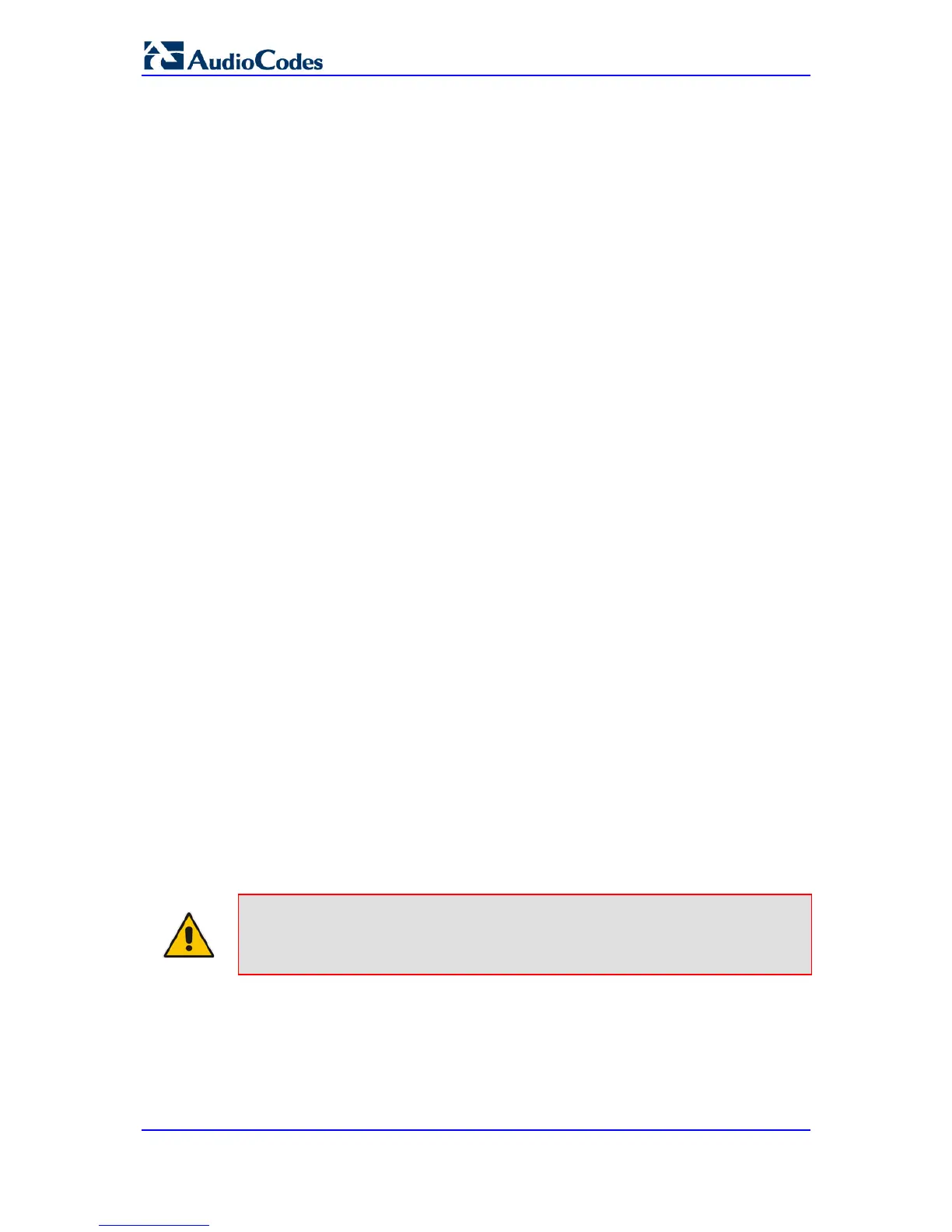User's Manual 354 Document #: LTRT-65422
MP-11x & MP-124
32.4.5 HTTP-based Automatic Updates
An HTTP/S server can be placed in the customer's network where configuration and
software updates are available for download. This does not require additional servers at
the customer premises and is NAT-safe.
For example, assume the core network HTTPS server is https://www.corp.com. A master
configuration ini file should be placed on the server, e.g.,
https://www.corp.com/gateways/master.ini. This file could point to additional ini files,
auxiliary files (e.g., call progress tones), and software files (cmp), all on the same HTTP
server or different HTTP servers in the network.
The main advantage of this method is that the HTTP configuration can be checked
periodically when the device is deployed at the customer site. HTTP(S) is not sensitive to
NAT devices, enabling configuration whenever needed without on-site intervention.
For additional security, the URL may contain a different port, and username and password.
The devices should only be pre-configured with the URL of the initial ini file, using one of
the following methods:
Methods described in 'DHCP-based Configuration Server' on page 352 or above, via
TFTP at a staging warehouse. The configuration URL is configured using the
IniFileURL parameter.
Using DHCP Option 67 (see 'Configuration using DHCP Option 67' on page 353).
Manually on-site, using the RS-232 port or Web interface.
When the device is deployed at the customer site, local DHCP server provides the devices
with IP addressing and DNS server information. From the URL provided in the DHCP
response, the device can then contact the HTTP server at the core network and
automatically download its configuration. The URL can be a simple file name or contain the
device's MAC or IP address, e.g.:
http://corp.com/config-<MAC>.ini - which becomes, for example,
http://corp.com/config-00908f030012.ini
http://corp.com/<IP>/config.ini - which becomes, for example,
http://corp.com/192.168.0.7/config.ini
32.4.6 Configuration using FTP or NFS
Some networks block access to HTTP(S). The Automatic Update feature provides limited
support for FTP/FTPS connectivity. Periodic polling for updates is not possible since these
protocols don't support conditional fetching, i.e., updating files only if it is changed on the
server.
The only difference between this method and those described in 'HTTP-based Automatic
Updates' on page 354 and 'Configuration using DHCP Option 67' on page 353 is that the
protocol in the URL is "ftp" (instead of "http").
Notes:
• Unlike FTP, NFS is not NAT-safe.
• NFS v2/v3 is also supported.

